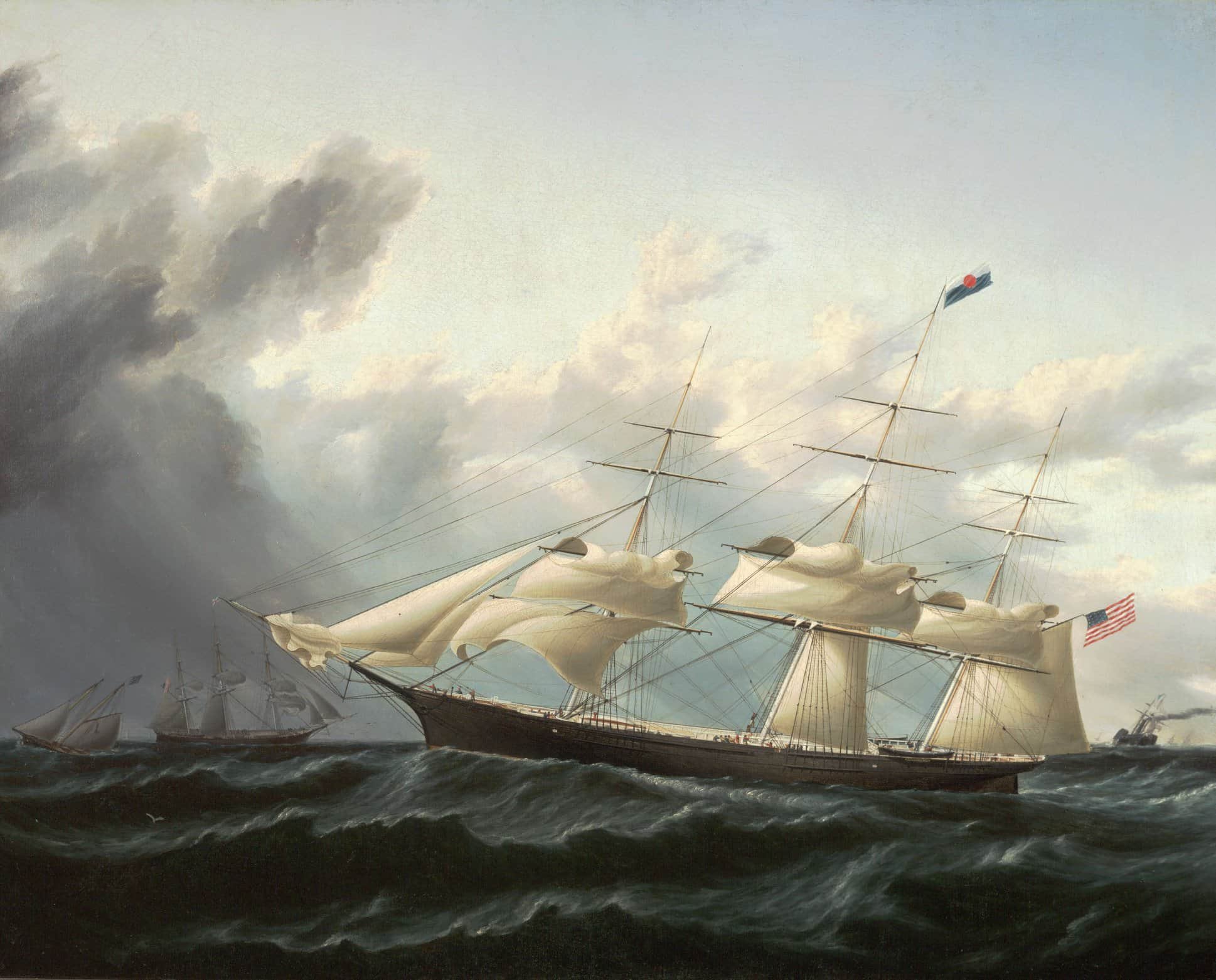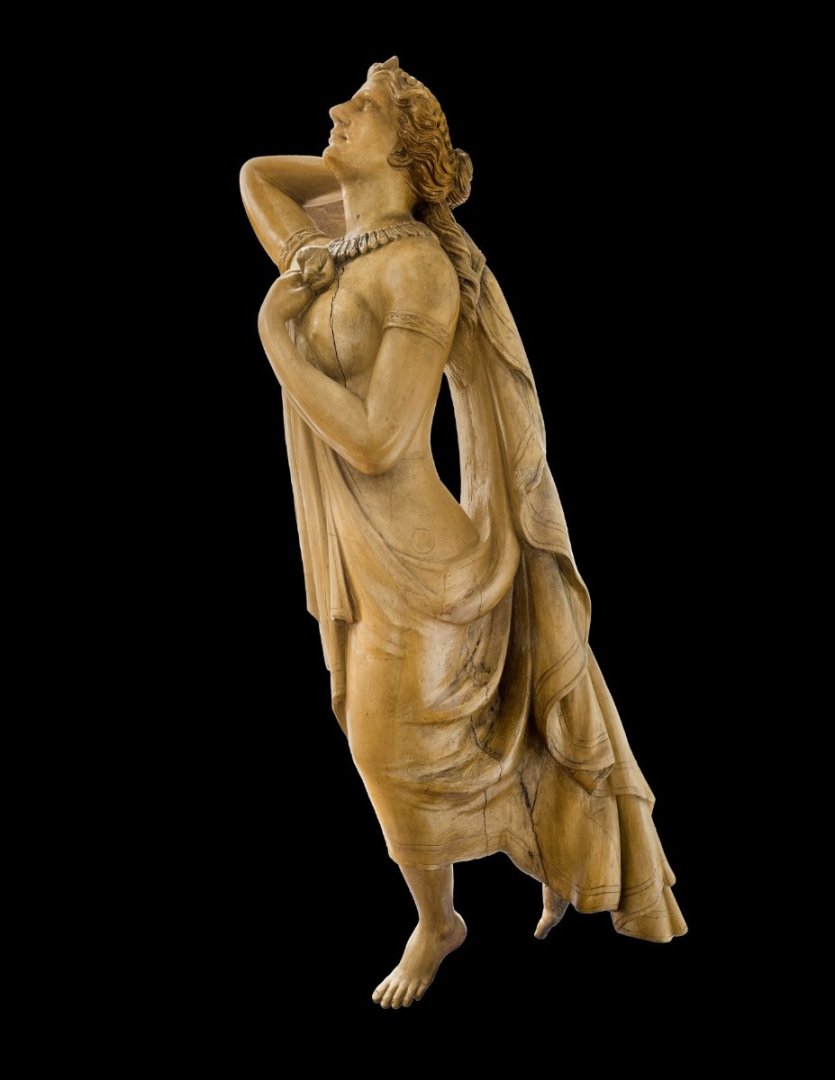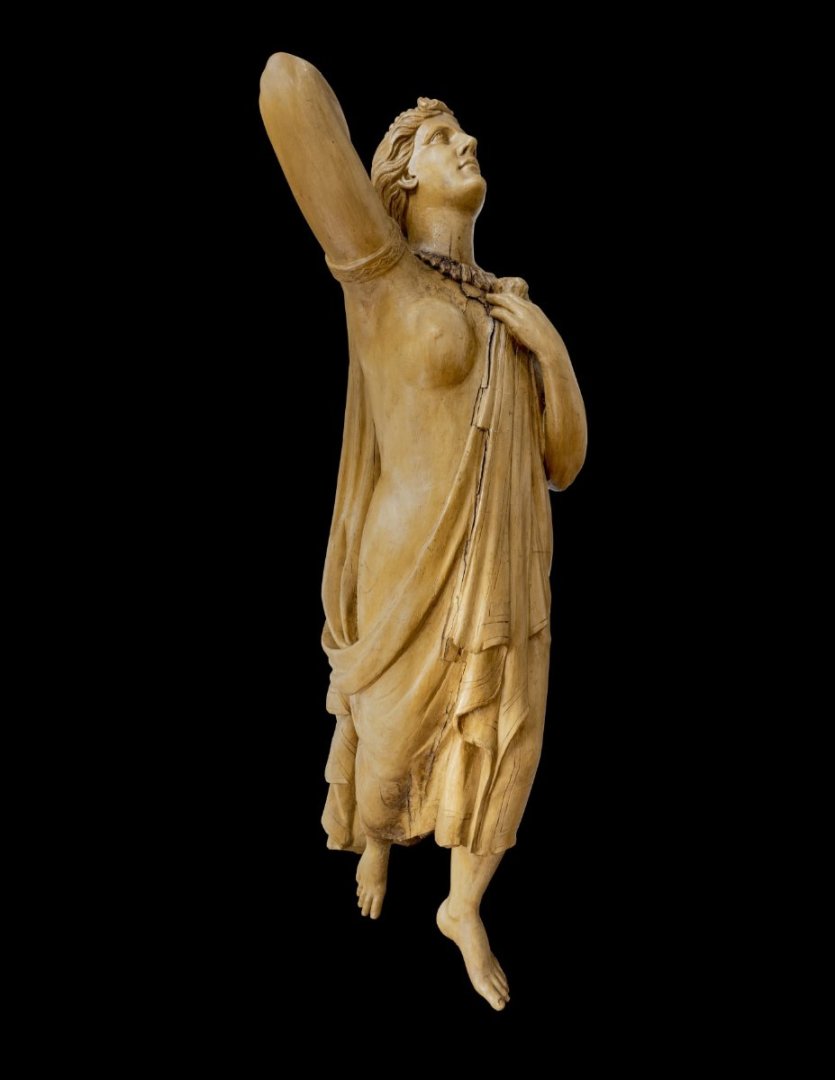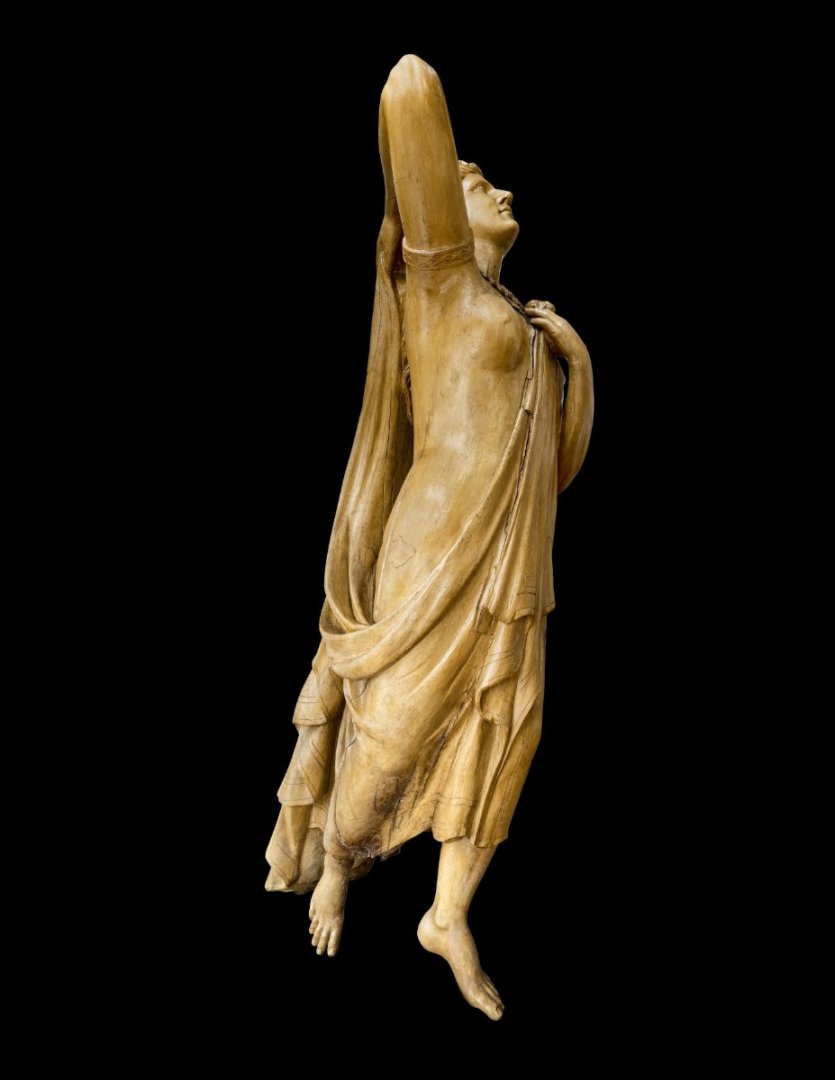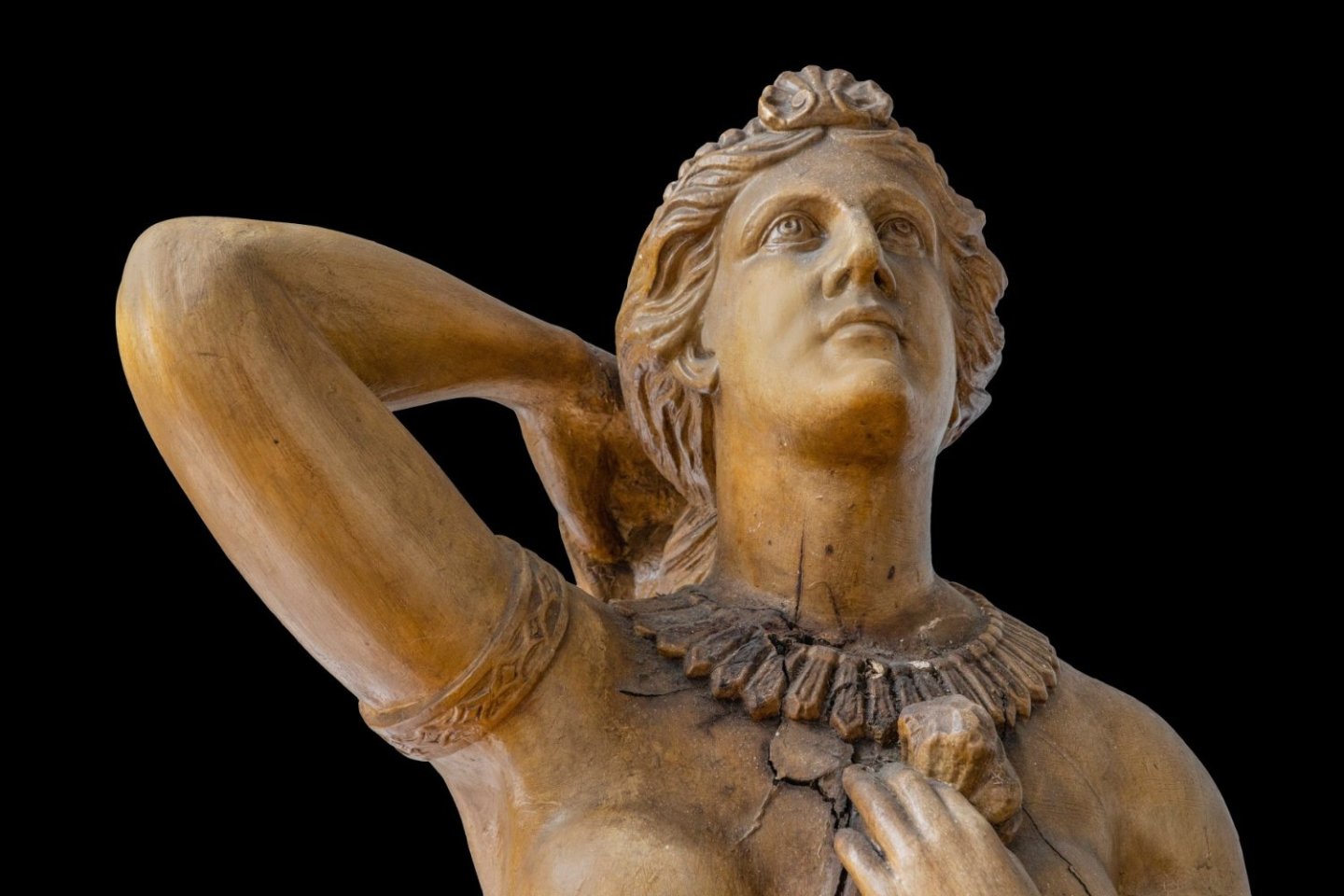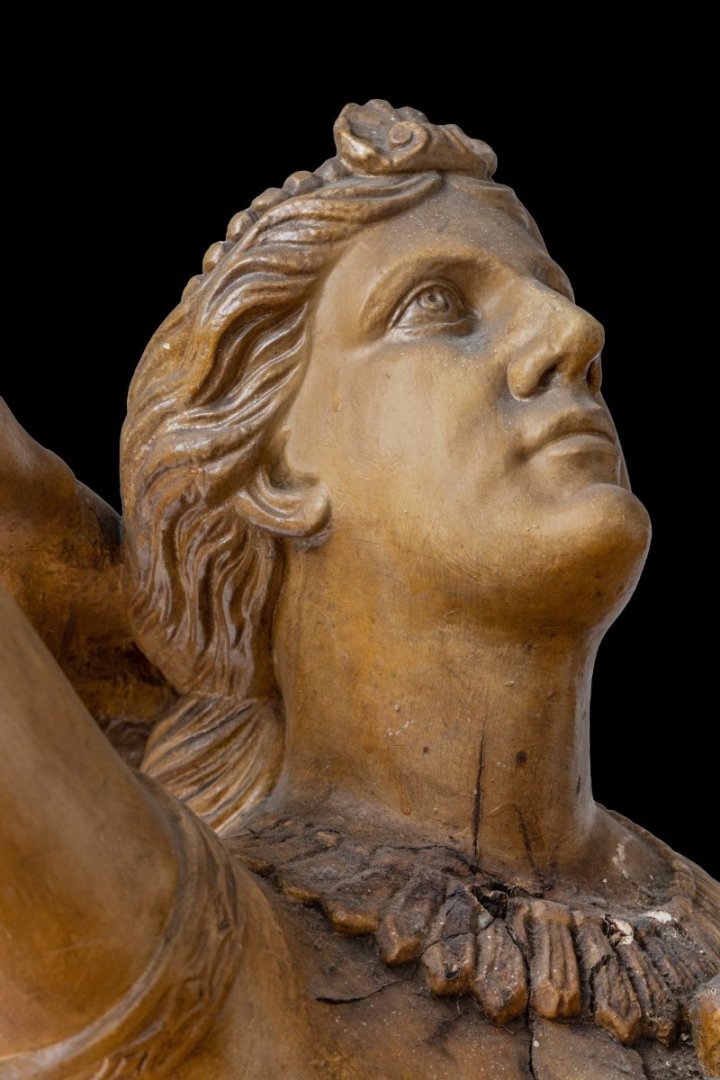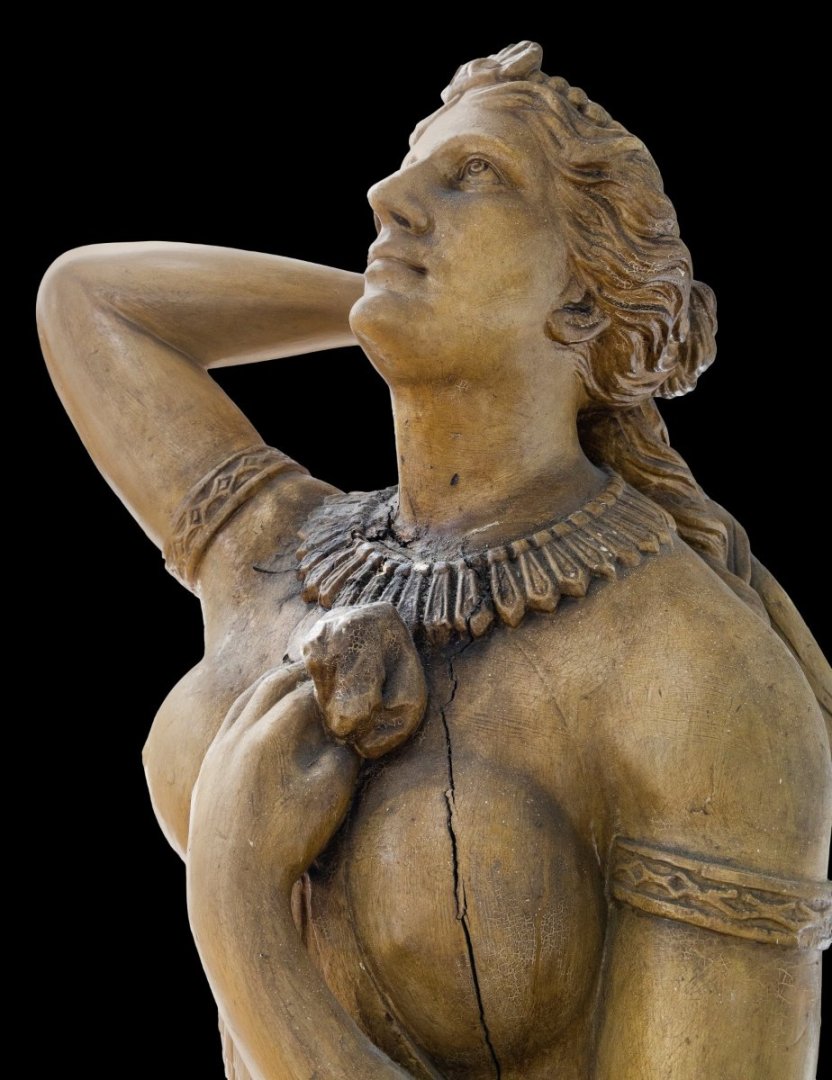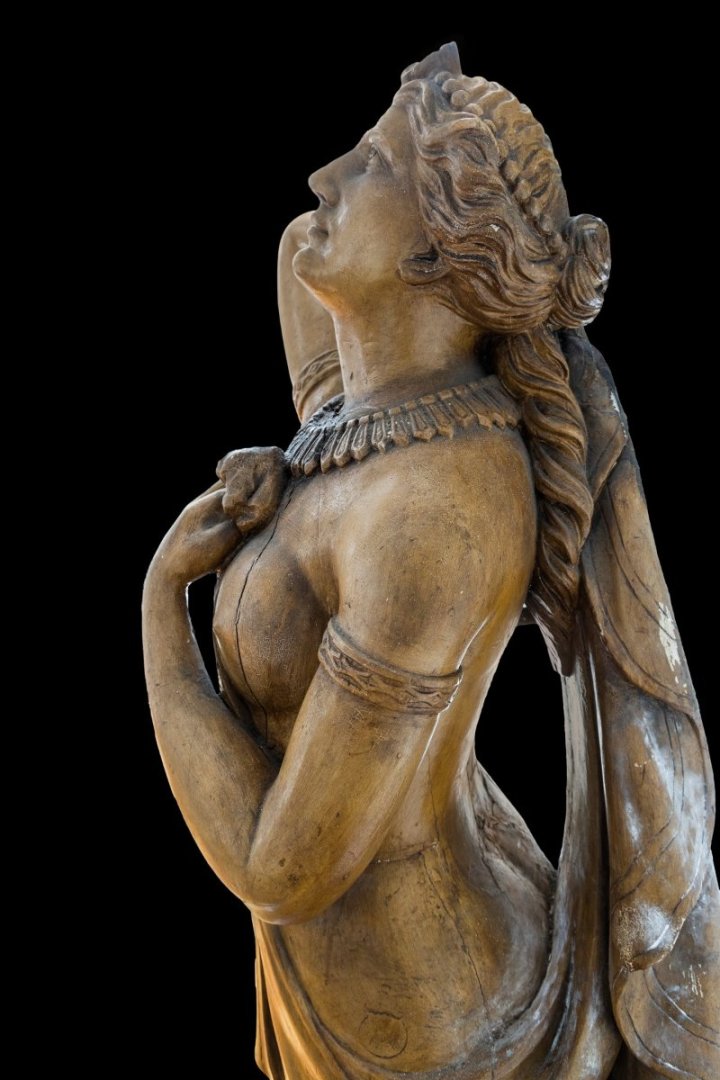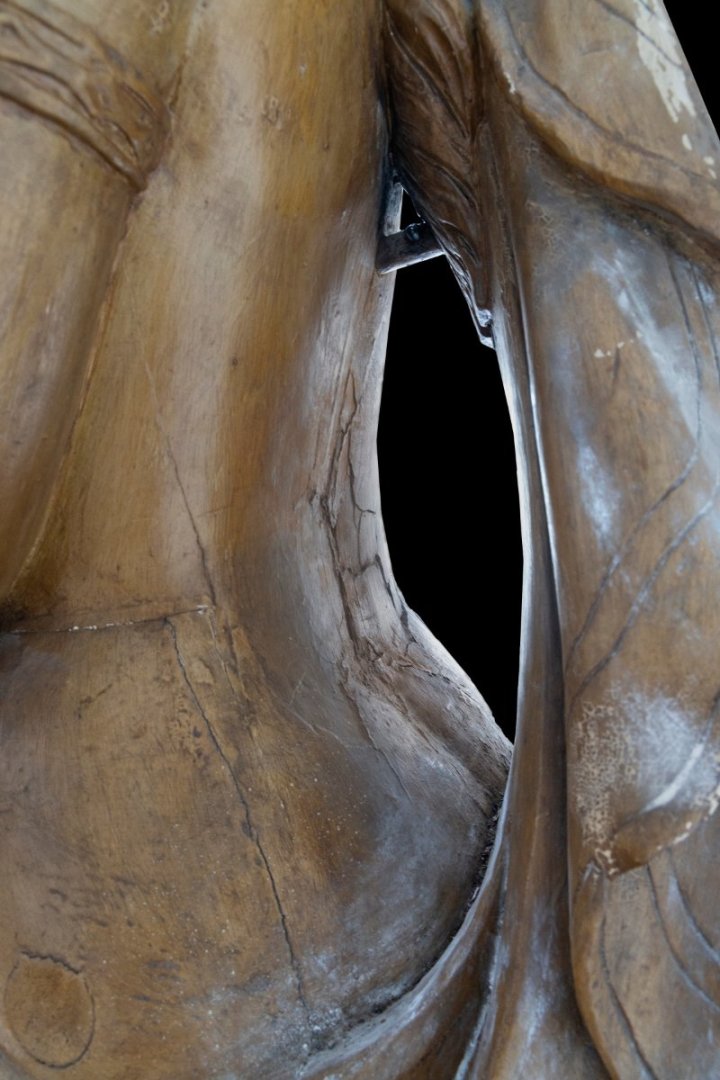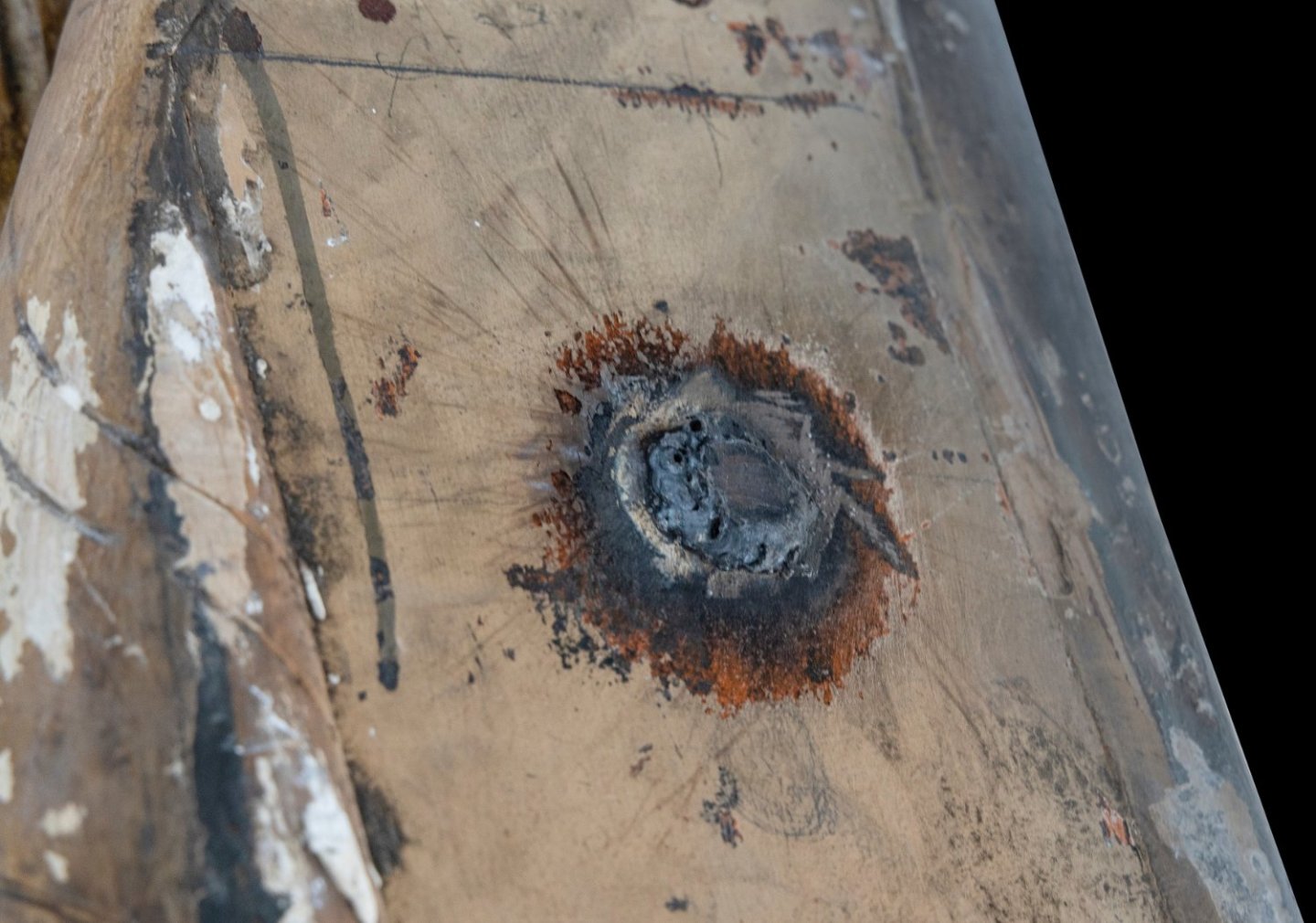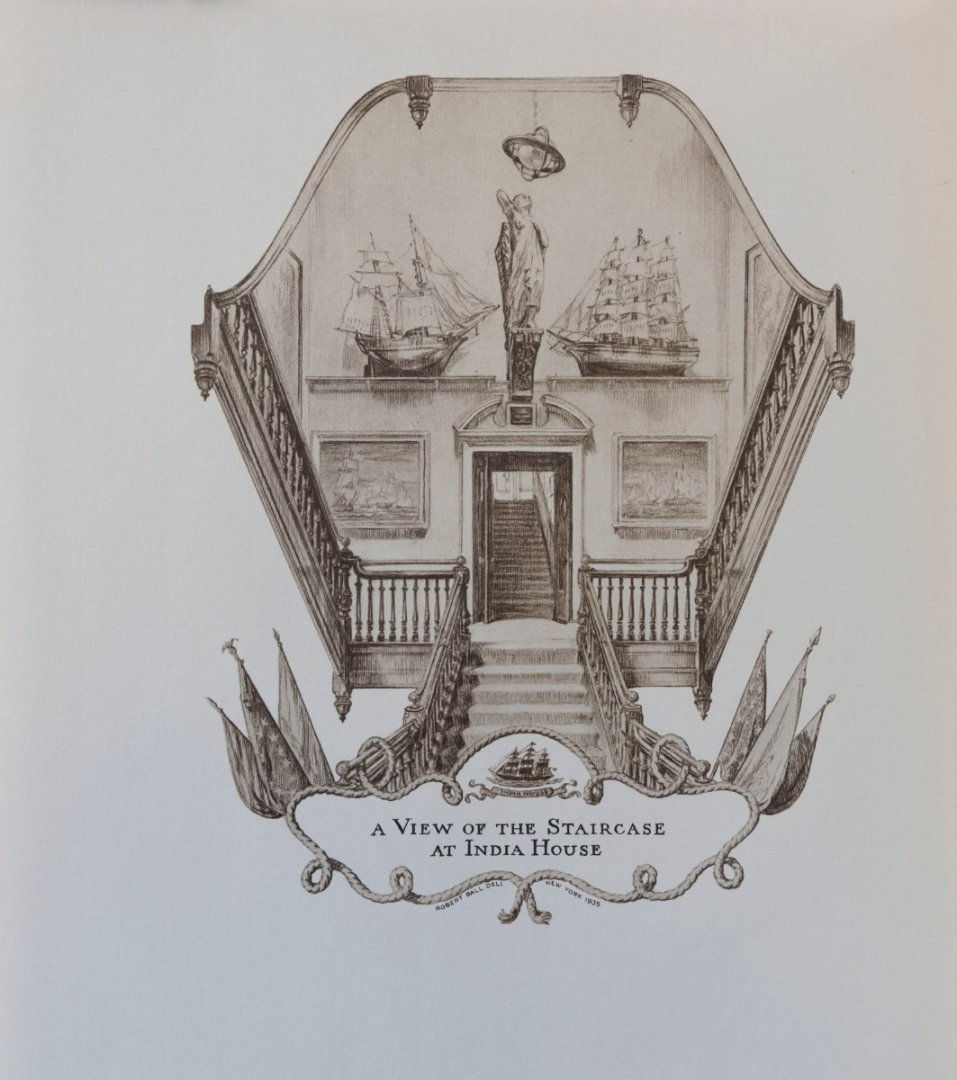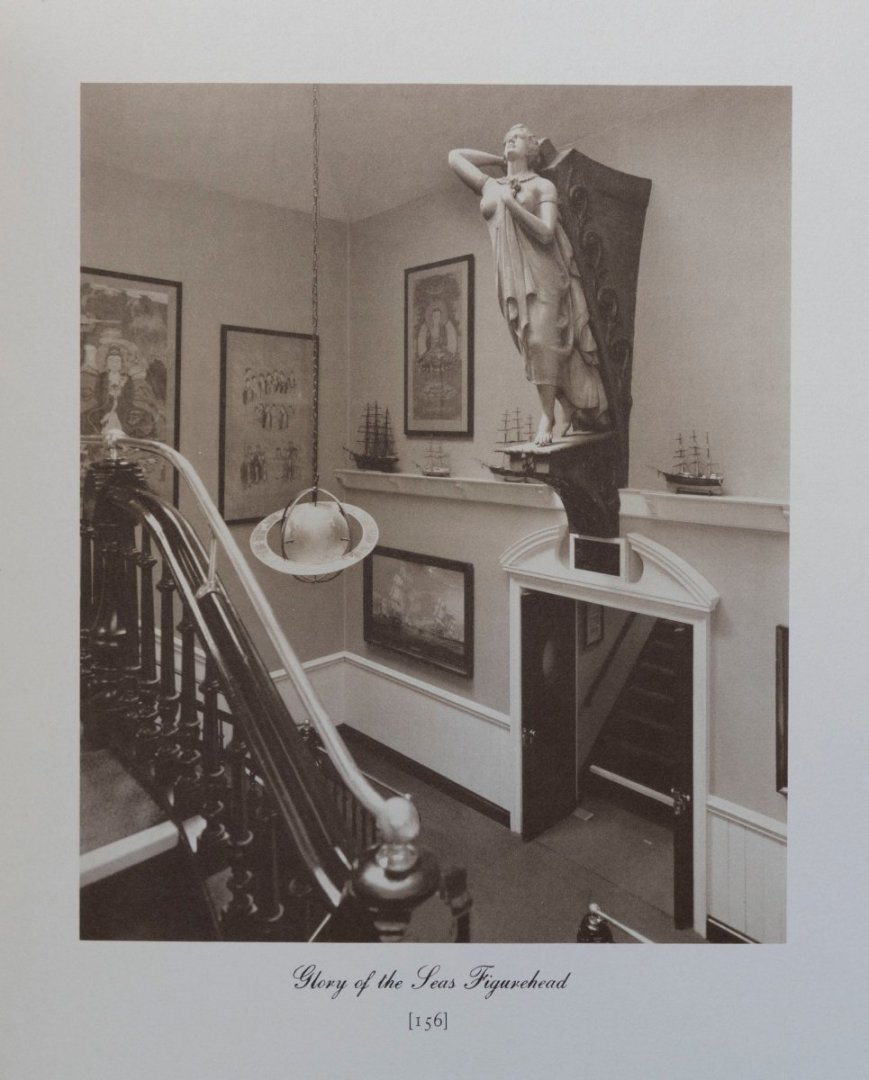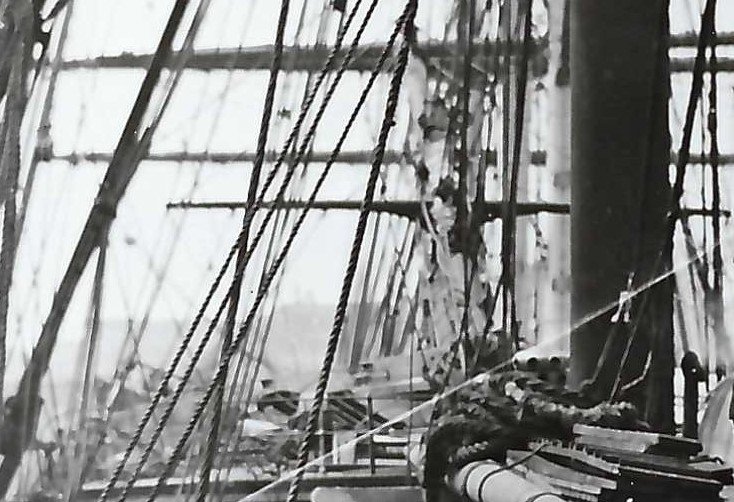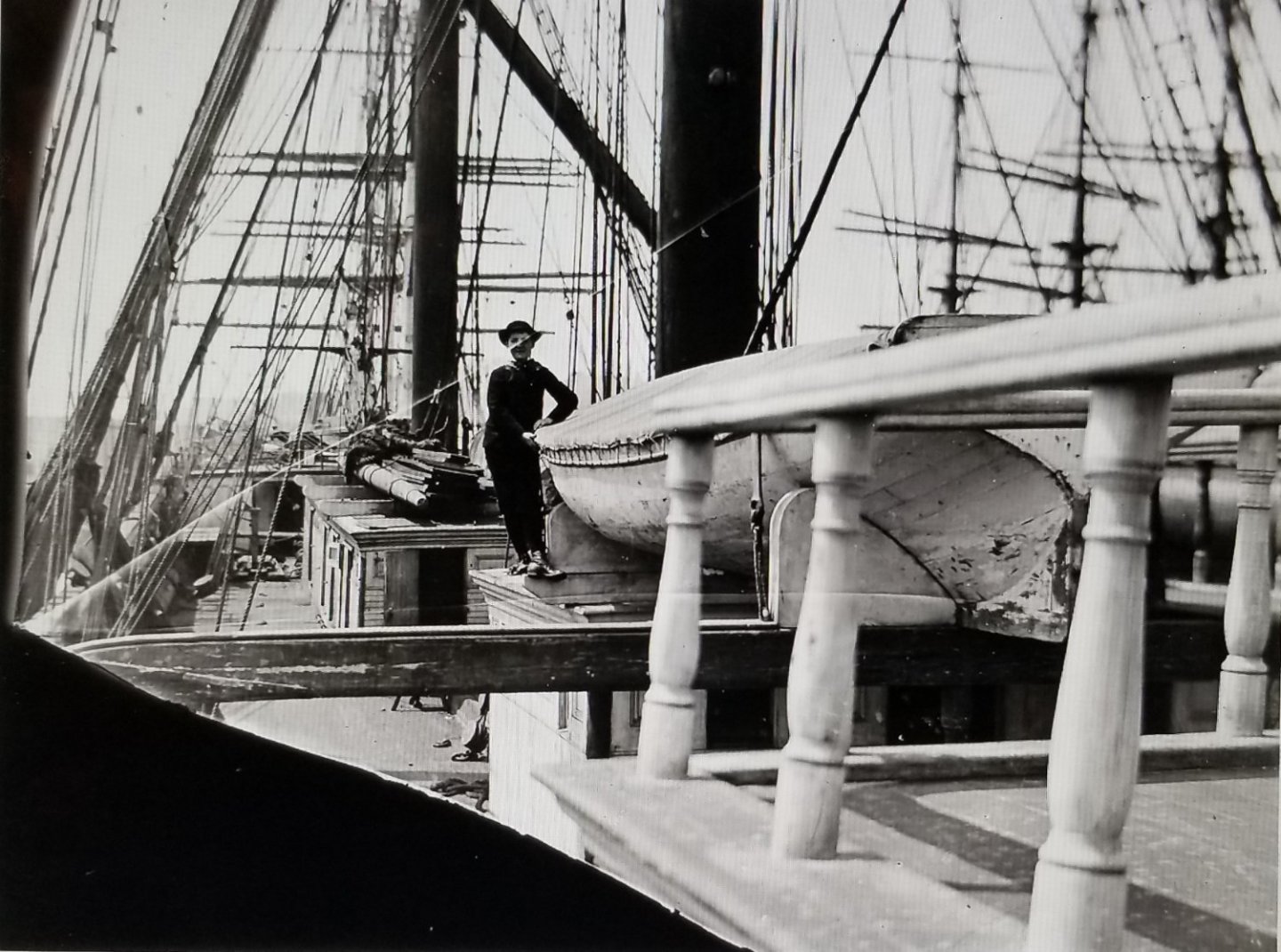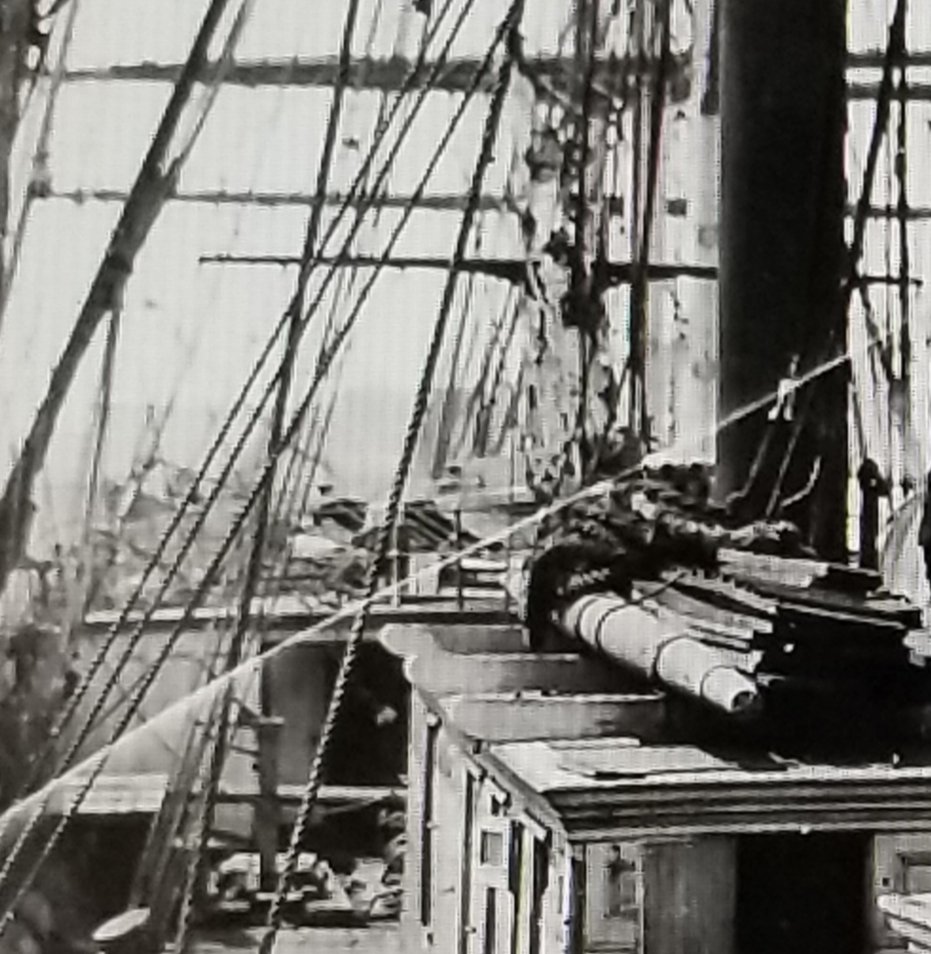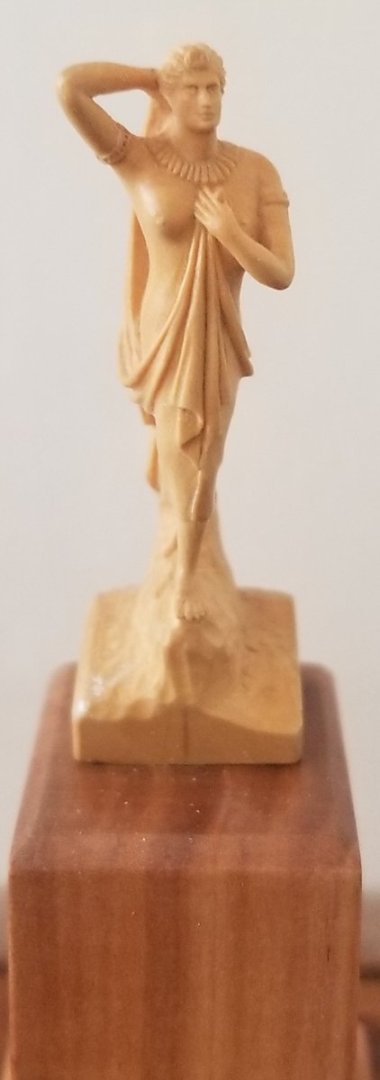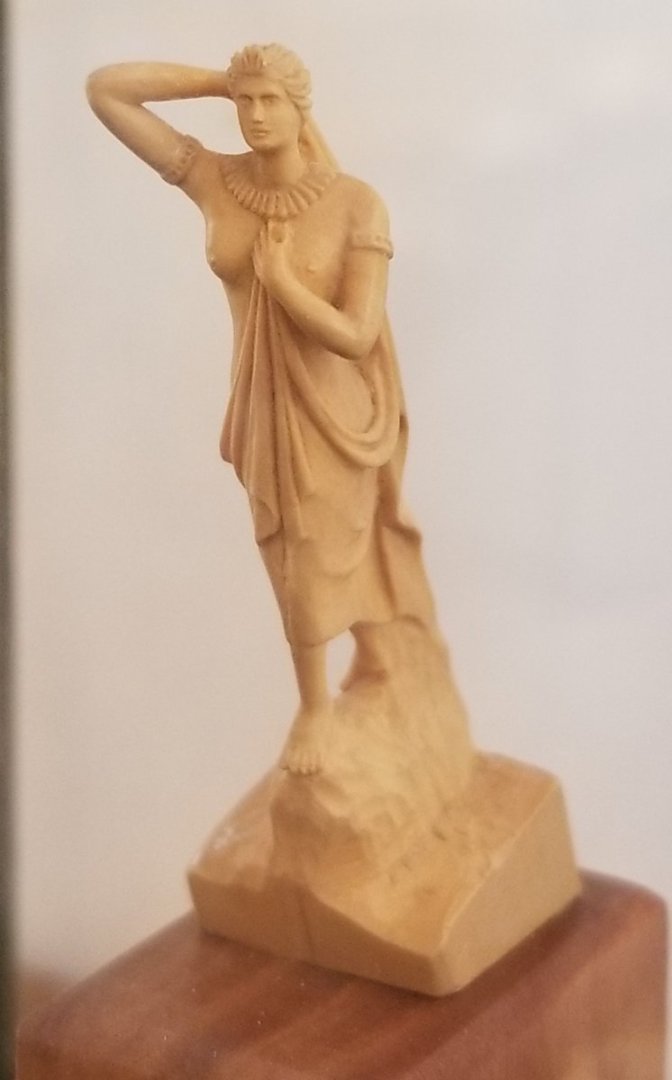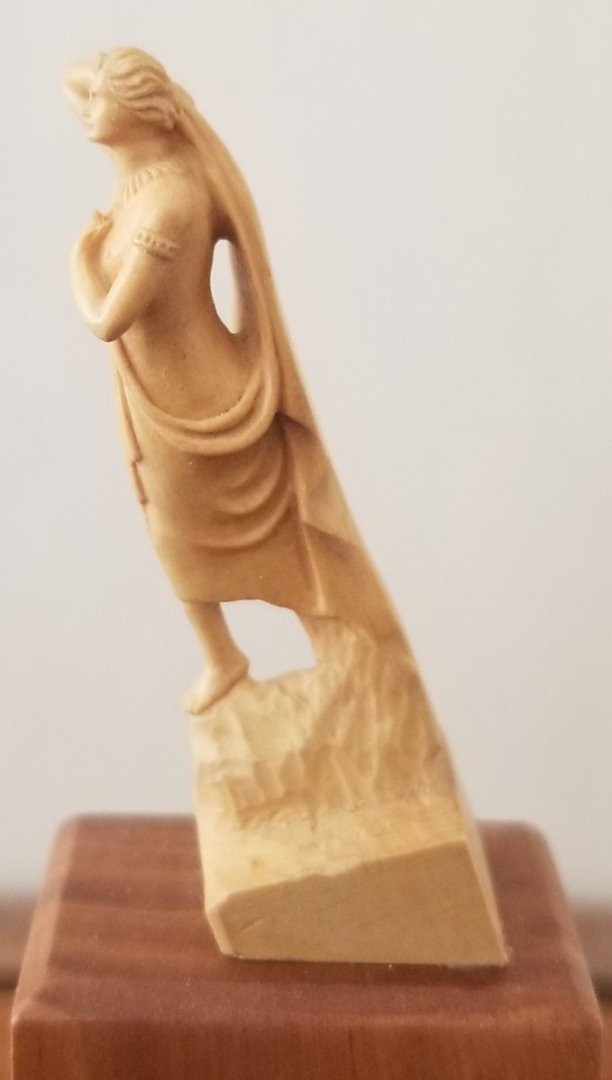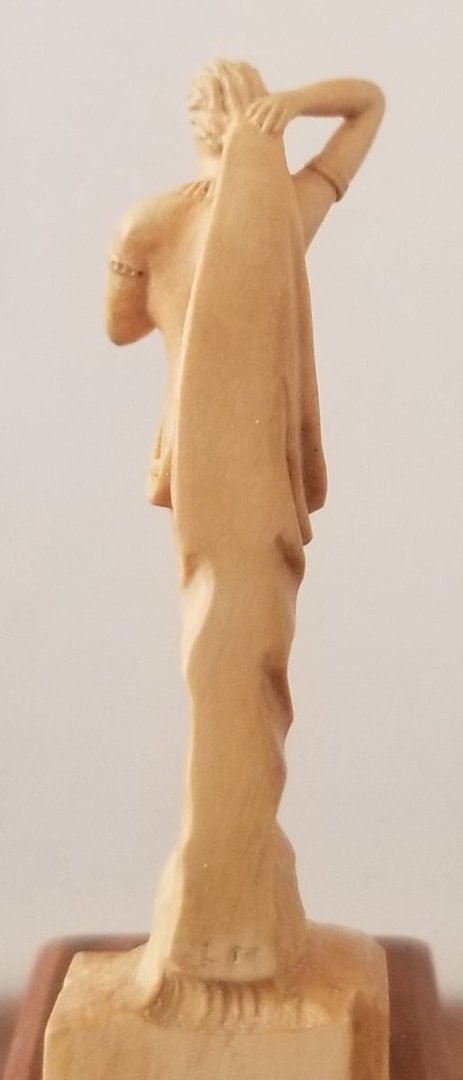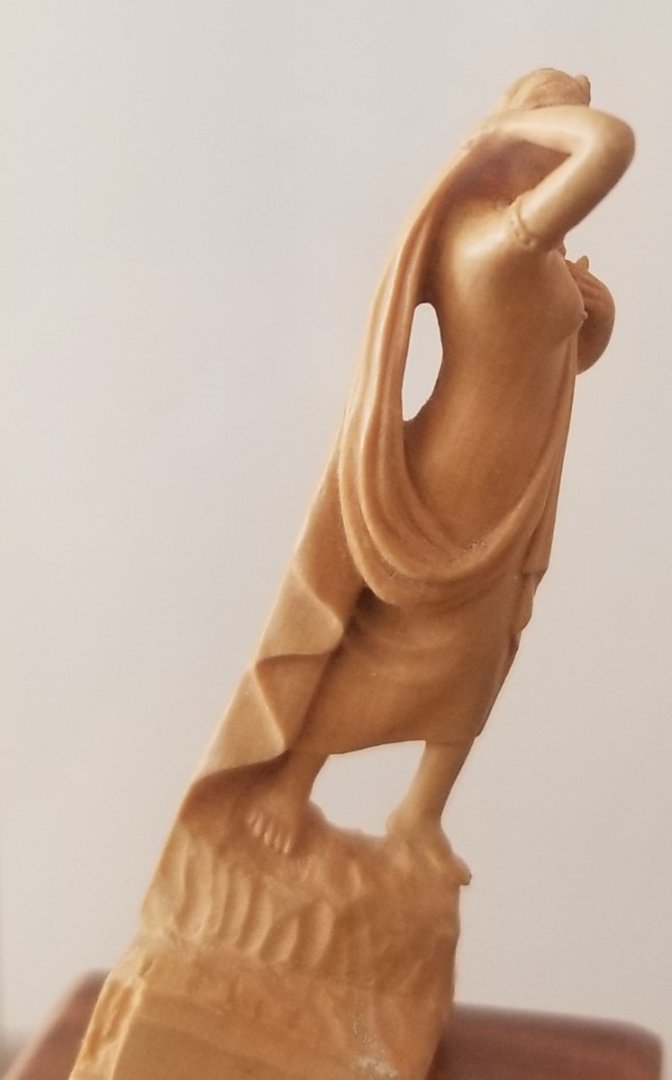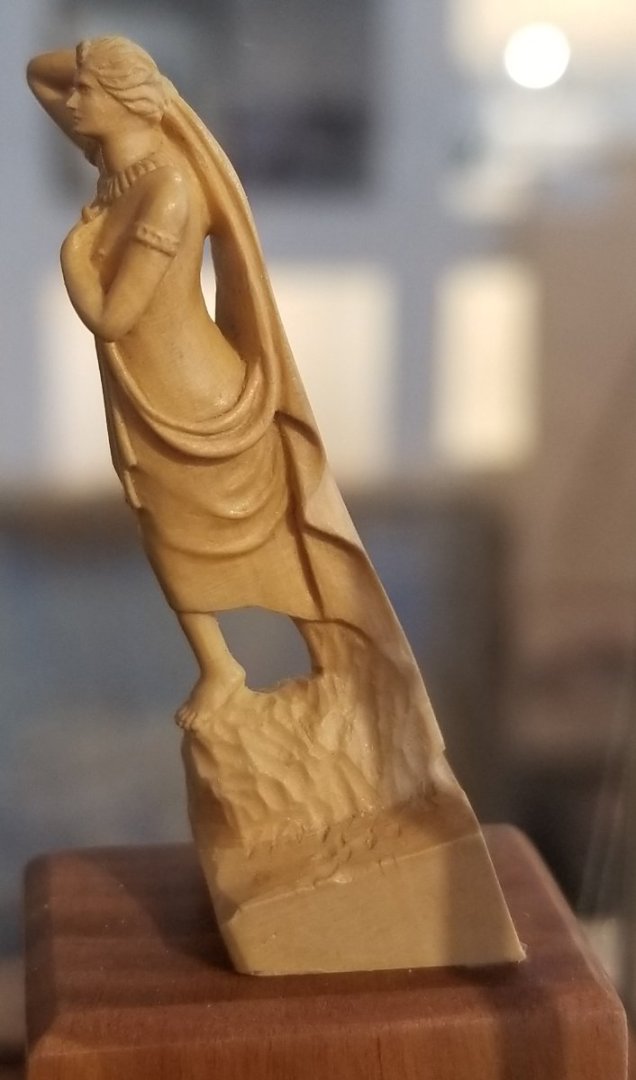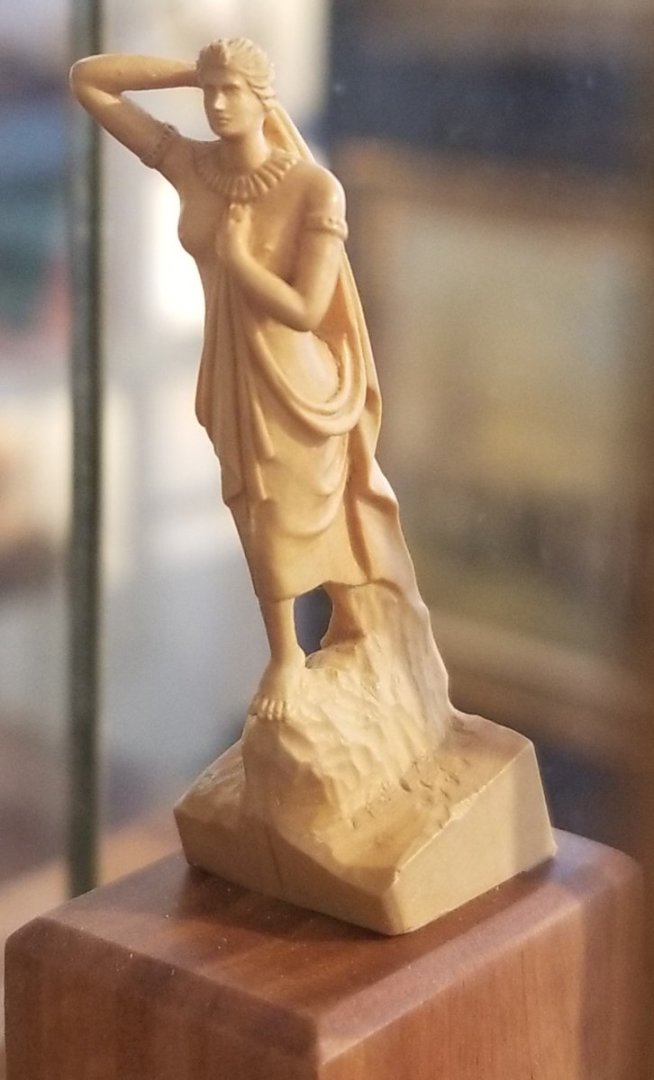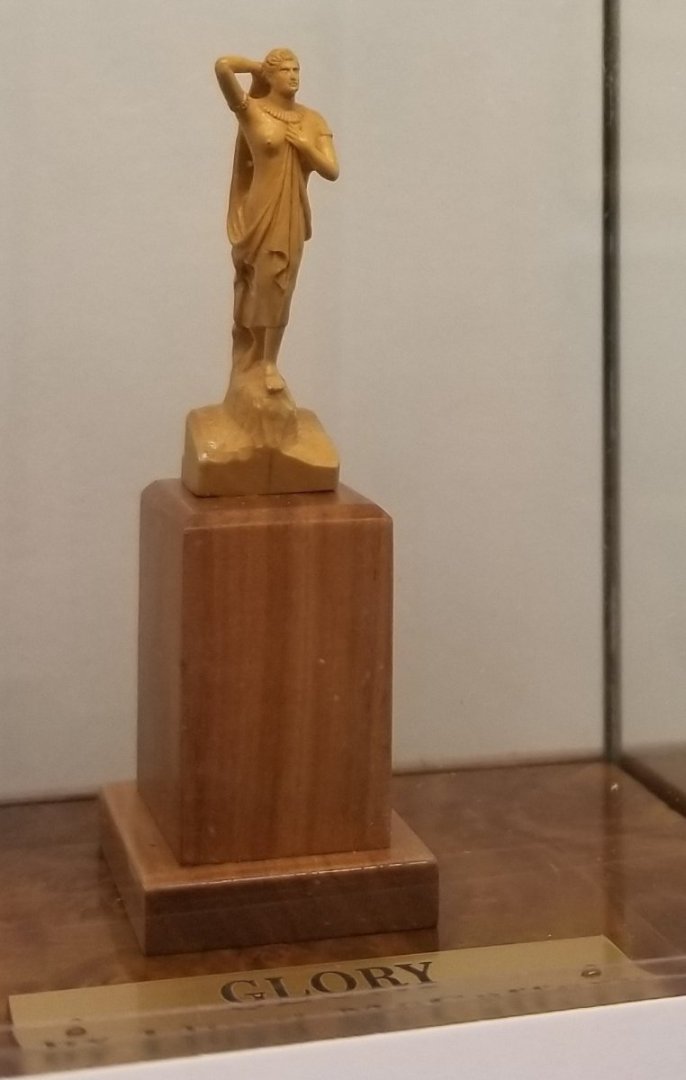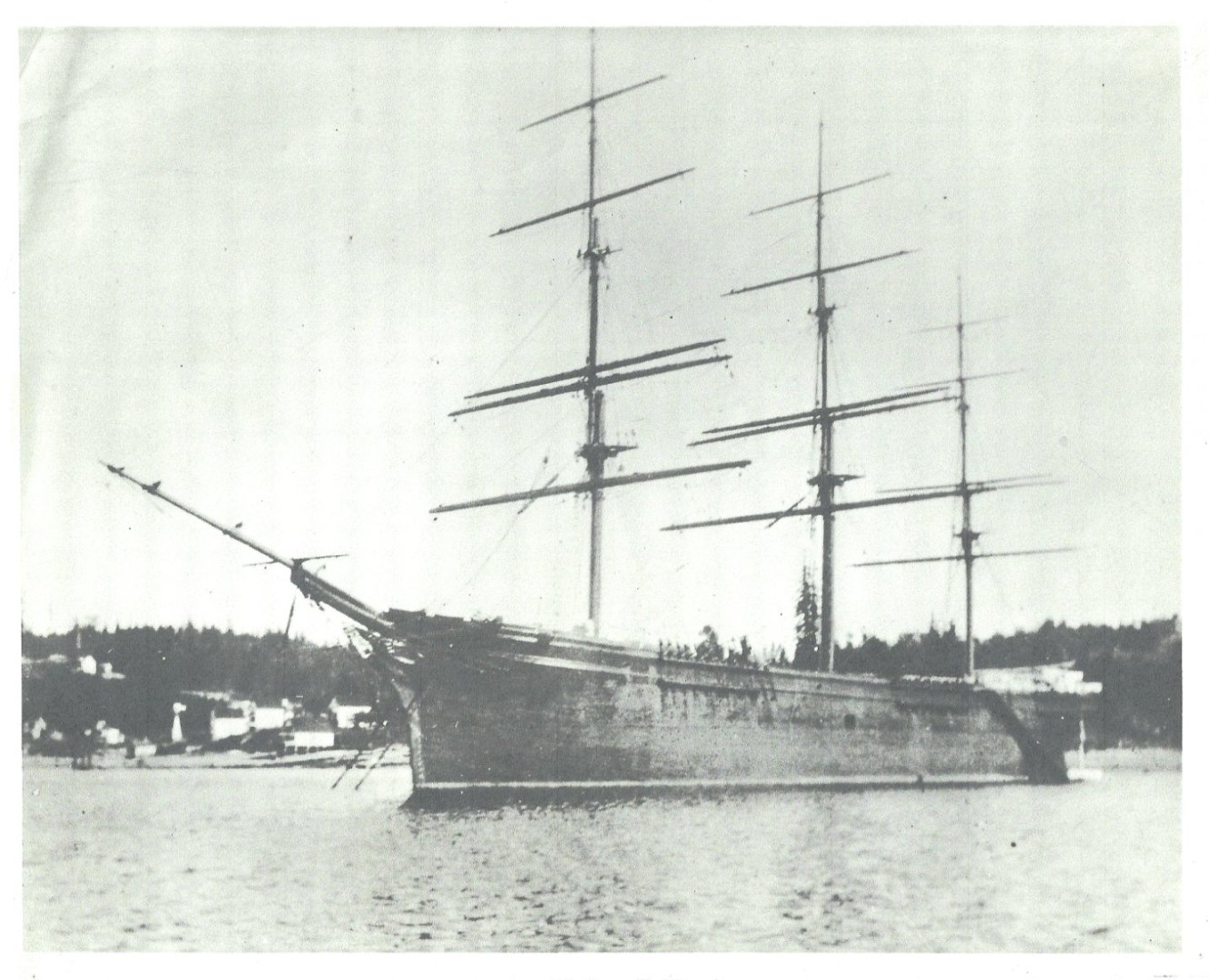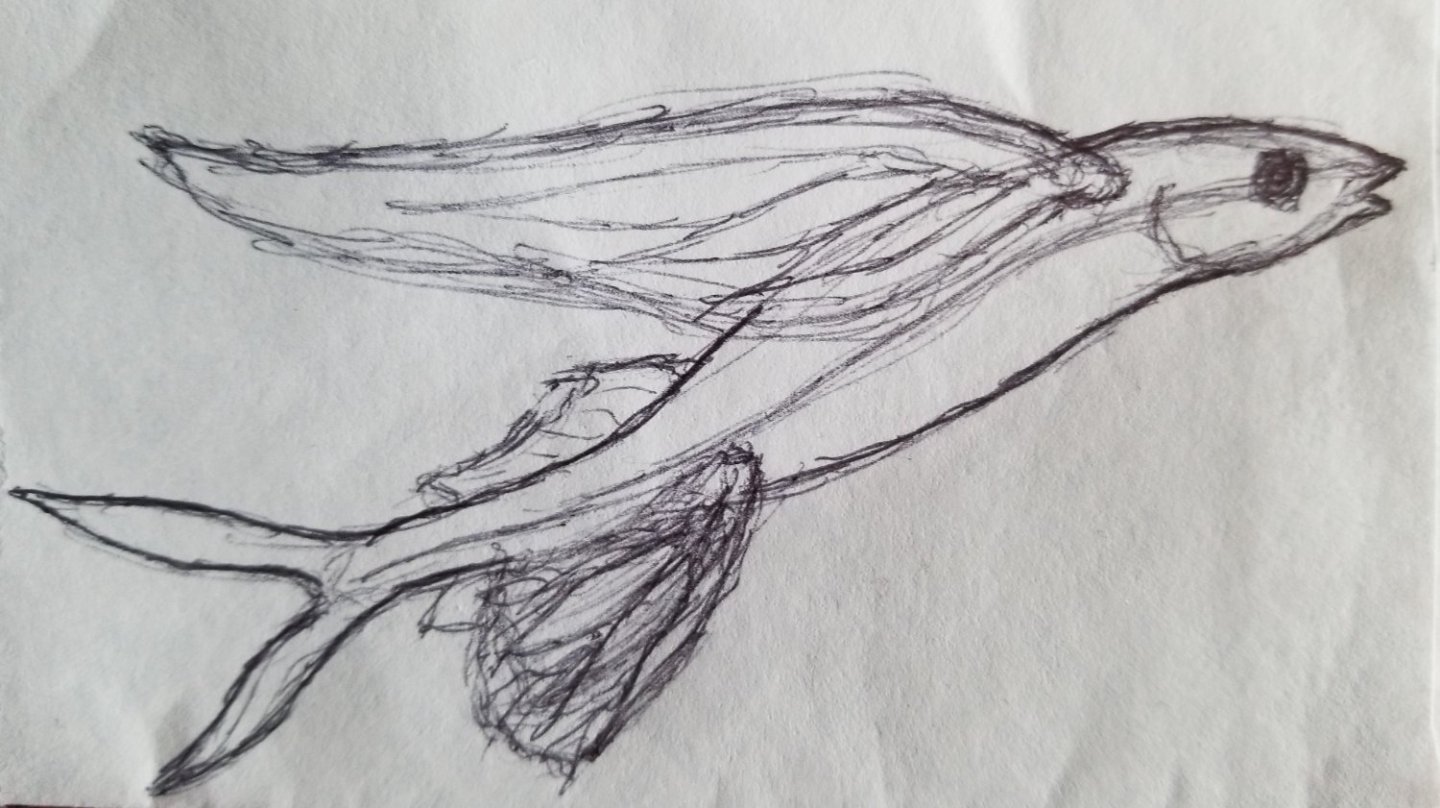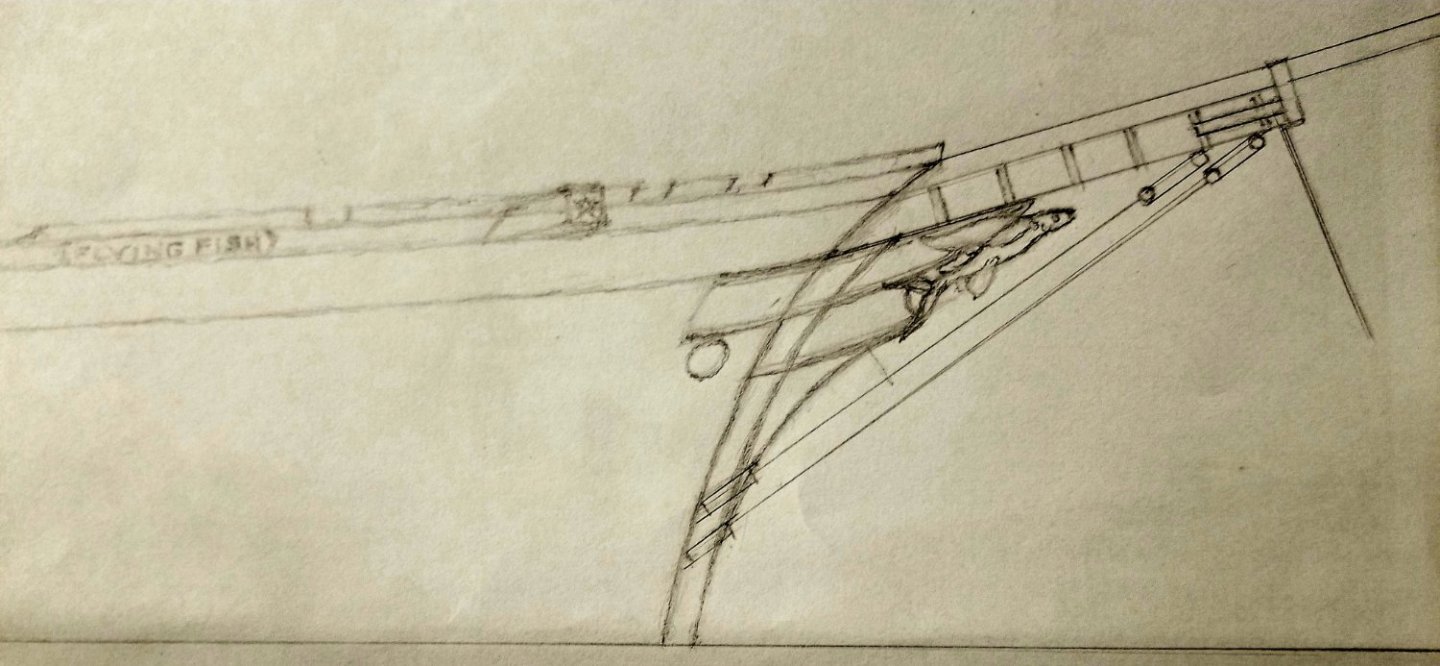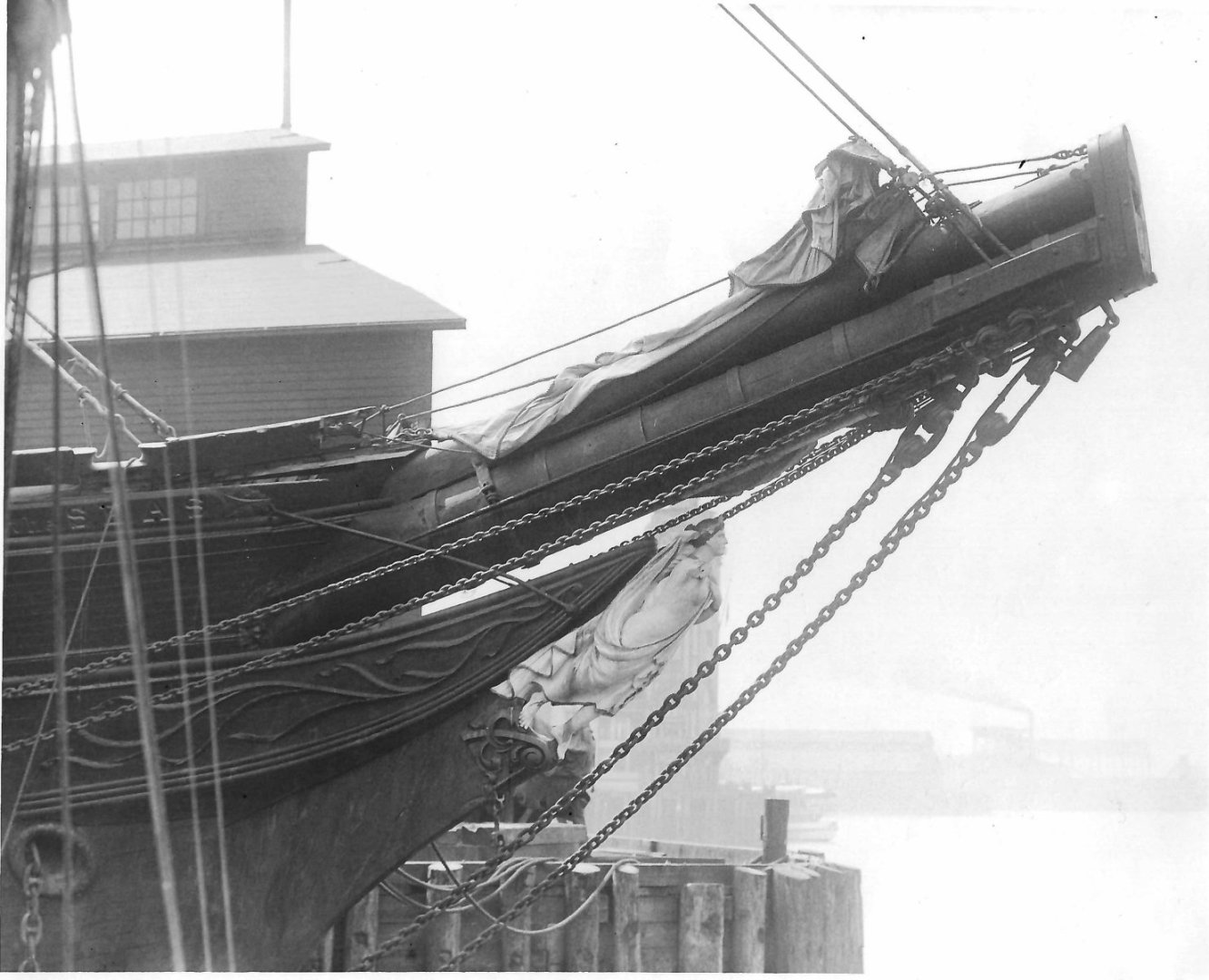-
Posts
2,152 -
Joined
-
Last visited
Content Type
Profiles
Forums
Gallery
Events
Everything posted by ClipperFan
-
Vladimir, Rob and I are members of a Facebook group "The Era of Clipper Ships". The moderator just posted a link to Hyland Granby Antiques, located in Cape Cod. Apparently they recently acquired the original Grecian Goddess 'Athena' from Glory of the Seas. Here are some of the sharpest, most detailed images I've ever seen of his spectacularly beautiful piece of carving.
- 3,560 replies
-
- clipper
- hull model
-
(and 2 more)
Tagged with:
-
Rob, seeing this incredibly complex latticework myriad lines, I reiterate what I said months ago. I sure hope you wrote down a guideline of where everything goes. I have a strong feeling Vladimir's gonna need it!
- 3,560 replies
-
- clipper
- hull model
-
(and 2 more)
Tagged with:
-
Rob, an elegant solution keeping in line with historically accurate documentation. As usual, you've done a masterful job.
- 3,560 replies
-
- clipper
- hull model
-
(and 2 more)
Tagged with:
-
Snug Harbor Johnny That reminds me of that olde english tongue twister: "How many canaries can a clipper ship ship, if a clipper ship can ship canaries?" 🙂
- 3,560 replies
-
- clipper
- hull model
-
(and 2 more)
Tagged with:
-
Rob, The biggest support for that conclusion is the photographic evidence. There's definitely at least one line that is secured to that curving structure with the distinctive figure eight wrapping as well. Meanwhile, it also appears like the mounting bit stationed afore both capstan and cat-heads has some significant lines terminating on it as well. In the later image, where Glory's beached this same structure is shorn of any lines. I believe that's because those lines with their accompanying gin blocks have long since been removed.
- 3,560 replies
-
- clipper
- hull model
-
(and 2 more)
Tagged with:
-
Rob, Isn't it possible that owing to prior dismantling of her masts that much of Glory's rigging would have been removed too by the time this picture was taken? From this earlier 1895 image, now that it's been cropped to bring details into sharper focus, I can see that there's definitely at least one line which is mounted to the curving horizontal internal bow structure, there's lines wrapped around it in a figure eight style. Looking at the capstan, there's the dual lines which seem to mount to the thick wooden bit ahead of the capstan, this bit is still visible slightly forward of the capstan and on her fo'c'sle but in the later picture it has no lines attached to it.
- 3,560 replies
-
- clipper
- hull model
-
(and 2 more)
Tagged with:
-
Rob, Since you're considering dry transfers to redo your stern, I thought you might want to make use of this. I based floral patterns on the original carved arch of Glory's ornate cutwater while the letter patterns are derived from the excellent images supplied to us by Mike. What I found fascinating is that the name board letters and stern letter patterns, while somewhat similar, don't exactly match. Oh, yeh yu kan rezt asurred, az a formur Englyzh Majur, mi spelying is kompletelie korekt.
- 3,560 replies
-
- clipper
- hull model
-
(and 2 more)
Tagged with:
-
Rob, Here's my sketch for the Glory of the Seas name board. From careful observation of the real article mounted in the San Francisco Maritime Museum Library, I calculated it to be 14 feet long by a foot high with 10" hand chiseled letters. The end trim appears to be oak leaves. Letters, surrounding trim and end pieces were all originally gold leaf on a black background.
- 3,560 replies
-
- clipper
- hull model
-
(and 2 more)
Tagged with:
-
Rob, your name board is spelled correctly. However "empass" really to be correct should have been "impasse." Since you asked, I figured since you asked...
- 3,560 replies
-
- clipper
- hull model
-
(and 2 more)
Tagged with:
-
Rob, Going back to only internal view of Glory's f'o'cstle, there does seem to be photographic evidence supporting a fife rail of sorts, in two locations. Most obvious is where two major lines mount to a rail in mid center. Between the two lines are a mound of rope coils which indicates lines which might be too light to see. The second possibility is a thick horizontal curving structure just at the bow. Although, there doesn't appear to be any belaying pins visible. It defies logic that there wouldn't be any place to belay these important lines.
- 3,560 replies
-
- clipper
- hull model
-
(and 2 more)
Tagged with:
-
Rob, now that the fore main yard has been mounted, her resemblance to the real vessel herself is remarkable. Glorious, glorious, simply glorious.
- 3,560 replies
-
- clipper
- hull model
-
(and 2 more)
Tagged with:
-
Vladimir, Doris is a lady who creates phenomenal lifelike sculptures with a form of sculpey clay for her incredible cardboard based sailing ships. Her 1600s Sovereign of the Seas is my personal favorite. She even gives tutorials on her sculpturing process. An advantage to her approach is that the figures are created larger than intended, as they shrink in the heating process. She's on this site with her own dedicated posts.
- 3,560 replies
-
- clipper
- hull model
-
(and 2 more)
Tagged with:
-
Rob, Vladimir et all, I just stumbled on some beautiful close-ups of Lloyd McCaffery's impressive "Glory" carving of Glory of the Seas" classic Grecian Goddess 'Athena' figurehead, found in my wife's phone. As it turned out, my phone's battery was low, so I borrowed Peg's and took these beautiful, sharp images. Which I then forgot were even in her cell phone. Vladimir, these should be a perfect resource to aiding you in recreating your own figurehead.
- 3,560 replies
-
- clipper
- hull model
-
(and 2 more)
Tagged with:
-
George, I agree with Rob, your ultimate solution was simple yet inspired. Well done
- 602 replies
-
- Flying Fish
- Model Shipways
-
(and 2 more)
Tagged with:
-
Rob, That's exactly what I was thinking too. The 1880s are a few years after the time period you're modeling.
- 3,560 replies
-
- clipper
- hull model
-
(and 2 more)
Tagged with:
-
Rob, In his latest email, Mike said a sailor, William Joseph who served on Glory of the Seas in 1880, modeled her with red pump wheels. This is not meant to tell you what color to paint your pump wheel, just sharing what Mike told me. I thought you would appreciate knowing.
- 3,560 replies
-
- clipper
- hull model
-
(and 2 more)
Tagged with:
-
Rob, Based on the 1909 date on the right Rob, Based on the 1909 date written on the right border, I believe she's had the height of her masts cut down at least twice by then. Her moonsail yard on her main mast is gone and it almost looks like her foremast is now higher than her main. It also appears like keel hogging has increased the height of her prow and reduced the rake of her prow. To see these changes easier, I lightened up the photo a little.
- 3,560 replies
-
- clipper
- hull model
-
(and 2 more)
Tagged with:
-
Rob, And here I was thinking all along that you intentionally made it a little longer so that it could demonstrate a "real dolphin striker!"
- 3,560 replies
-
- clipper
- hull model
-
(and 2 more)
Tagged with:
-
Rick310 this not meant to get off course on your build log of your beautiful Flying Fish model. Rob and I are just trying to get accurate information to you and the entire modeling community especially interested in recreating accurate versions of McKay's mysterious yet very famous Clippers. I personally view McKay's last Clipper Glory of the Seas as the "Rosetta Stone" of McKay's Clippers. In the description of his premiere Extreme Clipper "Stag Hound" Duncan MacLean mentions "hood ends" and a "cutwater." We cleary see those devices in every single pic of McKay's final Clipper. I believe that these surprisingly overlooked nautical devices were unique to Donald McKay's ships. I'll even go so far as to say that Bruce Von Stetina's magnificent Lightning (the very finest I've ever seen) incorporates the same glaring flaw of omitting both her naval hoods and cutwater. Again her figurehead is awkwardly tacked on below the bowsprit. Ironically, if you look at the plans in McKay's own hands, he left that prow area completely blank! Rob and I hope begin the process of correcting this glaring oversight.
- 343 replies
-
- Flying Fish
- Model Shipways
-
(and 1 more)
Tagged with:
-
Here's my interpretation of how the actual prow of McKay's Extreme Clipper Flying Fish would have appeared. 19th Figurehead carving would have been far more lifelike and elaborate than most people realize today. Unfortunately due to the unique McKay bow having been intentionally disguised by the ship master himself, all contemporary Flying Fish models feature just a bare stem. The substantial cutwater and naval hoods are nowhere to be seen. I have sketched how the naval hood components would overlay and join the cutwater which would have been joined to the stem. In one of his descriptions of the ruggedness of this nautical system, Duncan MacLean observed that even the loss of her cutwater would have had no effect on the watertightness of her prow. As the 1913 image of Glory of the Seas confirms, while most of her elaborate carved arch has washed away, the cutwater itself is still intact. That's even after suffering a collision which damaged her splash rail.
- 343 replies
-
- Flying Fish
- Model Shipways
-
(and 1 more)
Tagged with:
-
Rick310 Rob's referring to a couple nautical inventions of Donald McKay which we now both belive were unique to his Clipper Ships. I've shared a spectacular 1913 Muir photo of the bow of his final Medium Clipper Glory of the Seas. Her lovely figurehead, naval hoods and cutwater are all clearly displayed. Donald McKay so jealously concealed these naval devices that all current models of his amazing ships are inaccurate when it comes to these lost components. Elaborately carved naval hoods are just above and behind her figurehead, which rests upon and just forward of her cutwaters which mount over and extend her stem. Unfortunately, the otherwise highly detailed plans completely omit both the naval hoods and cutwater, opting instead to tack on her flying fish figurehead awkwardly on her bare stem under her bowsprit. Knowing the power of Cape Horn seas, this would have been lost with the first powerful wave.
- 343 replies
-
- Flying Fish
- Model Shipways
-
(and 1 more)
Tagged with:
-
Rob, When family comes over, is your Glory of the Seas project the center of attention? Some day I would love to see her in person. At nearly four feet in length, she must be spectacular.
- 3,560 replies
-
- clipper
- hull model
-
(and 2 more)
Tagged with:
-
Hi Arina! It's always great to hear from you! All I can say is cheer up! At least your dad has his own small following of dedicated groupies! 😉
- 3,560 replies
-
- clipper
- hull model
-
(and 2 more)
Tagged with:
-
George K, Other than Rob's verticle and horizontal mounting braces being thicker than the illustration, his gin blocks do match the configuration on your illustration. You could try thinning out those components to get closer to the plan but then they might not be sturdy enough to withstand the stress of chain mounts running down to the yardarm and down to the belaying point on the deck far below. Maybe Rob Wiederrich can explain his previous attempts to see if he ran into that issue in his own fabrication attempts.
- 602 replies
-
- Flying Fish
- Model Shipways
-
(and 2 more)
Tagged with:
-
George K From post #2822 to #2840 Rob describes in great detail his fabrication process for maling "gin blocks". From their function, they sound very similar to the halliard blocks you're looking to make.
- 602 replies
-
- Flying Fish
- Model Shipways
-
(and 2 more)
Tagged with:
About us
Modelshipworld - Advancing Ship Modeling through Research
SSL Secured
Your security is important for us so this Website is SSL-Secured
NRG Mailing Address
Nautical Research Guild
237 South Lincoln Street
Westmont IL, 60559-1917
Model Ship World ® and the MSW logo are Registered Trademarks, and belong to the Nautical Research Guild (United States Patent and Trademark Office: No. 6,929,264 & No. 6,929,274, registered Dec. 20, 2022)
Helpful Links
About the NRG
If you enjoy building ship models that are historically accurate as well as beautiful, then The Nautical Research Guild (NRG) is just right for you.
The Guild is a non-profit educational organization whose mission is to “Advance Ship Modeling Through Research”. We provide support to our members in their efforts to raise the quality of their model ships.
The Nautical Research Guild has published our world-renowned quarterly magazine, The Nautical Research Journal, since 1955. The pages of the Journal are full of articles by accomplished ship modelers who show you how they create those exquisite details on their models, and by maritime historians who show you the correct details to build. The Journal is available in both print and digital editions. Go to the NRG web site (www.thenrg.org) to download a complimentary digital copy of the Journal. The NRG also publishes plan sets, books and compilations of back issues of the Journal and the former Ships in Scale and Model Ship Builder magazines.

